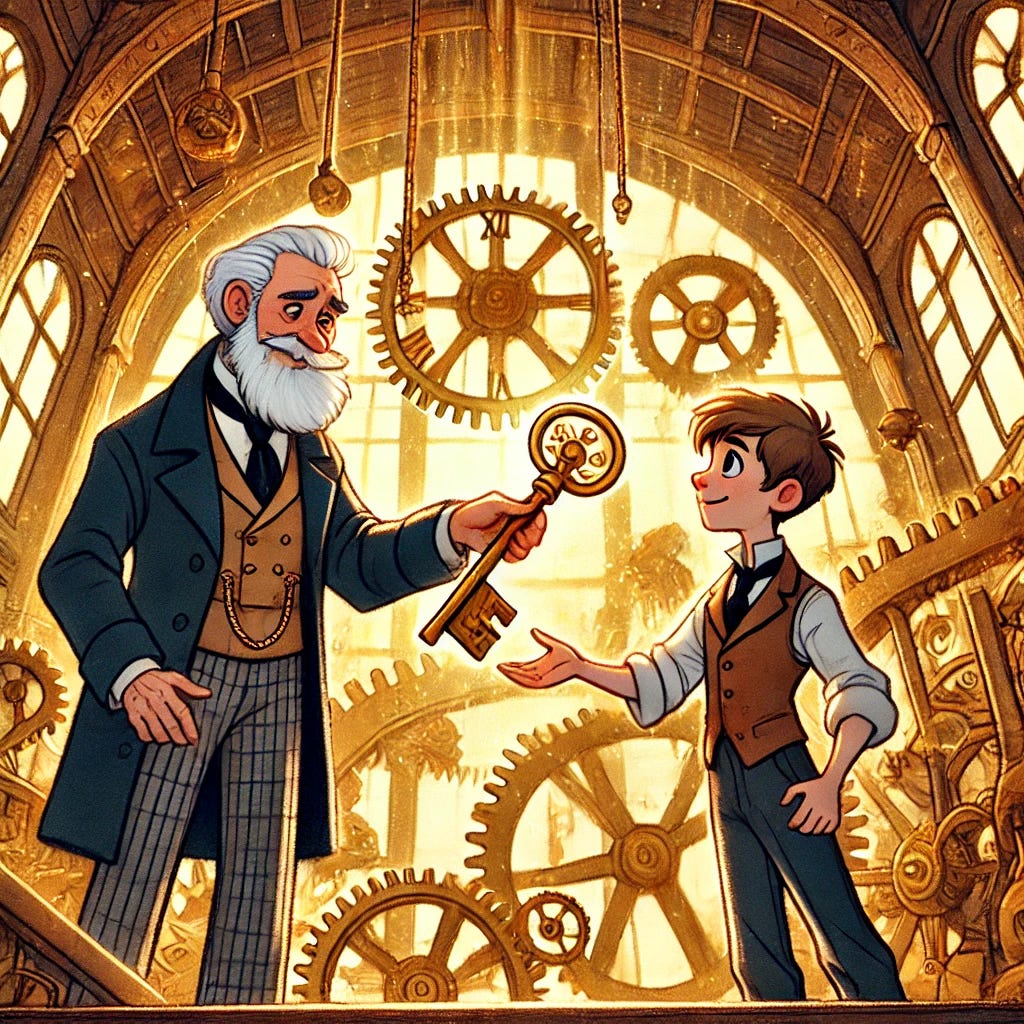This issue comes up frequently for me, as it did last week with one of my coaching clients, a young executive who is worn to the bone doing everyone else’s work for them. After listening to him in his exhausted state complain about how no one pulls their weight I had to teach him a fundamental lesson in management, something I call the Master Key.
The highest form of leadership is restraint—especially when you already know the answer.
In the workplace, people and positions exist to solve problems. That’s not controversial. The higher up you go in an organization, the more complicated and consequential the problems become, and the more authority, prestige, and compensation are awarded to those who can solve them well. That’s the economy of leadership, and I like it: the more value you create, the more valuable you become. But … over time, something dangerous can creep in and its a subtle sign of immaturity.
Solving problems becomes more than a function—it becomes an identity. CEOs, managers, and ambitious lieutenants start to crave it, not because the problems demand their unique genius, but because solving them feels good. It feels like progress. It feels like value. And when it feels that good, you start looking for your next hit.
I see it all the time. Leaders get subtly, almost unconsciously, addicted to the dopamine hit of solving someone else’s problem. When stuck on a problem of their own, they’ll roam the halls looking for an easier problem to solve from a subordinate.
This creates a pattern—an unhealthy one—that looks like this: An employee comes to them with a well-formed issue. Maybe it’s 80% done, maybe 90%. The framing is right, the analysis is solid, the options are clear. What’s missing is the final step—clarity, conviction, decision. And that’s where the leader jumps in, arms wide like a hero in a management musical. “What if we did it this way?” they offer. The employee lights up. “Oh! Mr. Bossman, you’re so smart with your giant brain—I never would’ve thought of that!” The boss smiles, modestly but with just the right amount of visible pride, and says something like, “Well, you’re getting there. One day you’ll think like this on your own.”
It all looks so wholesome. The problem gets solved. The employee feels supported. The boss feels brilliant. Everyone walks away a little taller. The only thing missing is the truth.
Because the truth is that this whole interaction is a fraud.
It’s a subtle form of theft, wrapped in good intentions and soft skills. The leader is stealing something they shouldn’t: the decision. And with it, they steal the stretch, the confidence, the earned competence that comes from wrestling an issue to the ground. It’s like the employee does 999 pieces of a 1,00-piece puzzle, the boss puts the last piece in and takes credit for the whole thing.
But that final piece only looks valuable because someone else did all the hard work. This is managerial cosplay. It’s performance art. The decision is the easy part—once all the hard thinking is done. And if you keep inserting yourself into that last 15%, what you’re doing isn’t leadership—it’s ego maintenance. And worse, you’re training your people to depend on you, a cardinal sin in management of all types.
When leaders do this repeatedly, they create a culture of escalation. Employees stop finishing their own thoughts. They stop owning the full arc of a problem. They get in the habit of bringing half-solved challenges to the boss, hoping he’ll wave his wand and pronounce the answer. Everyone’s happy—until you look at the system honestly and realize you’ve become the bottleneck. No decision happens unless you’re in the room. You’ve bred a team of deputies who look up instead of around. And the worst part? You did it to yourself.
So what’s the alternative?
It’s simpler than it sounds. It starts with one question. When someone brings you a problem, you say, “What do you think we should do?” And then—this is the critical part—you shut up. Like, really. STFU!
Don’t lead the witness. Don’t pepper them with hypotheticals. Don’t reward them for deference. Sit quietly and let them think, speak, and finish the thought. Unless the answer is going to blow the company off the road into a ditch, you let them run with it. You say something like, “I agree. What do you need me for anyway? You’ve got this.” And you let the solution be theirs.
The first time you do this, they’ll be surprised. The second time, they’ll hesitate. The third time, something will change. They’ll believe you. They’ll begin to trust their own thinking. And with that trust comes a transformation—your people stop asking for answers and start bringing conclusions. The proudest moment is when they come in and say “You’ll never believe what I did!” and start telling you war stories. They stop checking in and start owning outcomes. They become leaders, because they’ve been treated like leaders.
And that’s the job. That’s the whole job. There’s no more to the job.
Not solving the most problems, but producing the most problem-solvers. Not being the hero, but building a team that doesn’t need one. Not finishing every race yourself, but creating the conditions where other people cross the finish line and don’t look back for your approval.
So next time someone brings you a challenge, don’t be clever. Don’t be impressive. Be a leader.
Ask the question. Mean it. Then get out of the way.




